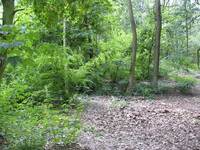- England
- Scotland
- France
- Holland
- Germany
- Italy
- Spain
- Portugal
- USA
- China
- Japan
- India
- Iran
- Advice
- Gardens
- England
- Scotland
- France
- Holland
- Germany
- Italy
- Spain
- Portugal
- USA
- China
- Japan
- India
- Iran
- Advice
- Garden Tours
Book: Landscape Planning and Environmental Impact Design: from EIA to EID
Chapter: Chapter 8 Forest design, forestry and sylviculture
Forest design requires forest designers. Concealment was the first official landscape policy adopted by the forest industry. 'Clinton's rule' [Fig 8.9], announced in 1927, enjoined that 'in all cases where natural hardwood existed alongside public roads, a strip of one chain's width was to be retained as a screen to hide the afforestation work behind it' (Ryle 1969: 258). Hardwood strips were planted and in 1969 it was said that 'from this ancient order of the day has sprung the unhappy "amenity belt" fetish which persists as the ultimate goal of landscape planning for some unenlightened foresters' (Ryle 1969: 258). The idea that whole forests might be sympathetically designed first appeared in the 1934 report: 'It appears to the Commissioners that by taking a little thought and possibly incurring a little additional expenditure in the utilisation of the land acquired for the new forests it might be possible to provide, for the future, areas as highly prized by the public as is the New Forest today' (Forestry Commission 1934: 49). They proposed: avoiding straight outlines to plantations, laying out roads and rides with more care, and varying the species within coniferous plantations. A major obstacle to making 'highly prized' forests was that more than 'a little thought' was required: they also needed the services of trained designers. In the 1959 Annual Report the Commission admitted that 'there are examples in their earlier plantations of defects such as straight rides, or fire lines, which unnecessarily ignored natural features. The Commission can have no complaint when criticism is directed to that kind of thing' (Forestry Commission 1959: 8). In 1972, almost forty years after the 1934 report, the problem had not receded. The interdepartmental cost/benefit study noted that: Almost all those consulted on this subject were convinced that antagonism to forestry on amenity grounds was largely inspired by the "bad" forestry of the past, and that provided such errors were avoided, the positive contribution of forestry to the visual scene, as enjoyed by walkers and motorists, would be beneficial (Forestry Commission 1972: 29). Annual reports from the Commissioners had sections on education, but the first reference to design training came in 1961 (Forestry Commission 1961: 14). The Commision's first landscape consultant was appointed soon after the Ministerial Statement of July 1963. Sylvia Crowe was asked 'to assist them in making their forests as attractive in appearance as they must be efficient in production' (Forestry Commission 1963: 9). In 1963 the Commission owned 708,965 ha. of forest land and oversaw 307,680 ha. of land which had been planted under the dedication scheme. This gave Miss Crowe (later Dame Sylvia Crowe) responsibility for over one million hectares of forest land. It was a large task for a little lady. Sylvia Crowe conducted a series of visits and then wrote an advisory booklet on Forestry in the landscape (Crowe 1966). A second edition, entitled The landscape of forests and woods (Crowe 1978) appeared in 1978. They are excellent publications but could not, on their own, convert scientific foresters into trained visual designers or recreation planners. If these booklets had been available in 1934, and if designers had helped to plan Britain's new forests, then the Forestry Commission might have rivalled the preï¾eminence of William Kent, Lancelot Brown and Humphry Repton in the annals of the English landscape. The first opportunity was missed but, in Sylvia Crowe's opinion, harvesting operations provide a second chance. In 1973 a single forest officer was sent on a landscape design course at Newcastle University. By 1978 he was 'involved in a wide variety of tasks, including the design of an important planting scheme at Beinn Ghuilean in South Kintyre which was featured in the Sunday Times colour magazine' (Forestry Commission 1978: 18). By 1984 the Commission had three staff members with landscape qualifications. Between 1975 and 1982 this team was able to design 'about 7,300 hectares of new planting and 7,100 hectares of felling and replanting' (Lucas 1984). The design effort was, rightly, concentrated on the most beautiful and prominent landscapes. In 1986 I calculated that if the rate of progress was maintained, and staffing was kept at the same level, then it would take 468 years to prepare initial designs for the 962,668 hectares of forest land which the Commission owned in 1983 (Forestry Commission 1983). The number of full-time designers has risen to some half-dozen and landscape design is now included in forestry education.
